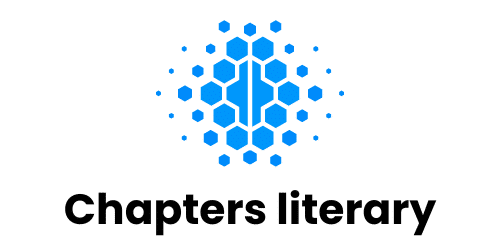How to Adapt Training Programs for Athletes with Visual Impairments?

When you think of athletes, the first image that springs to mind is probably one of physical prowess and perfect health. However, the world of sports is not limited to those with unimpaired vision. Athletes with visual impairment not only participate in sporting activities but also excel in them. The challenge, however, comes in adapting training programs to cater to the unique needs of visually impaired athletes. This article aims to guide you on how to make these training adaptations, using resources from reputable databases such as PubMed, PMC, and Google Scholar.
Understanding Visual Impairment in Athletes
Before we delve into the specifics of creating adapted training programs, it’s crucial to understand the nature and impact of visual impairment on athletes. Visual impairment in athletes can range from low vision, which may require some assistance, to total blindness. Each athlete’s experience and needs can vary significantly, depending on the severity and nature of their visual impairment.
In the same genre : What Techniques Are Used to Enhance Situational Awareness in Football Quarterbacks?
Visual impairment can affect an athlete’s capacity to engage in physical activity and sports in several ways. It can limit their ability to see the playfield, perceive depth, and react to visual cues quickly. It can also impair their coordination and balance, making certain sports or exercises more challenging. However, with appropriate adaptations, athletes with visual impairments can not only participate in sports but also excel at them.
Adapting Physical Exercise Routines
Adapting physical exercise routines for visually impaired athletes involves several considerations. The primary concern is to ensure the safety and comfort of the athlete during the exercise. As you design the routine, consider the athlete’s specific visual impairment, their level of physical fitness, and the nature of the sport they are involved in.
In parallel : What Are the Cognitive Benefits of Playing Strategic Position in Rugby?
The use of tactile cues and verbal instructions can be highly beneficial for visually impaired athletes. For instance, using textured surfaces or vibration-based devices can help an athlete understand position changes or movement patterns. It’s also crucial to clearly verbally explain the exercise, including the expected movements, any equipment to be used, and the intended outcomes.
Incorporating strength and balance exercises into the routine can also be beneficial. Such exercises enhance the athlete’s physical stability and confidence, improving their performance and reducing the risk of injury. It’s essential to monitor the athlete’s progress and adapt the routine as necessary, based on their improving skills and fitness level.
Utilizing Assistive Technology
Assistive technology can be a game-changer for athletes with visual impairment. These technologies can enhance the athlete’s ability to participate in sports and physical activities and improve their performance. For instance, sound balls or bells can be used in sports like football or basketball to help the athlete locate the ball.
There are also numerous apps and software that can assist in training. For example, apps that provide auditory feedback on running speed, distance covered, or heart rate can be useful for long-distance runners. Similarly, virtual reality technology can simulate different sports scenarios and provide tactile feedback, helping the athlete improve their skills and reactions.
Incorporating Mindfulness and Mental Health Support
The mental health of athletes with visual impairment is just as important as their physical health. Participating in sports can bring significant stress and pressure, which can be exacerbated by the challenges associated with visual impairment. Therefore, incorporating mindfulness and mental health support into the training program is crucial.
Mindfulness exercises can help the athlete stay present and focused, reducing anxiety and enhancing performance. Regular mental health check-ins and support, either through a coach or a mental health professional, can also be beneficial. These support systems can help the athlete navigate the emotional challenges that come with sports participation and visual impairment, fostering resilience and mental toughness.
Ensuring Inclusion and Accessibility in Sports Facilities
Lastly, inclusion and accessibility in sports facilities play a significant role in supporting athletes with visual impairment. These athletes should be able to navigate the facilities safely and independently. Adequate signage in braille, tactile ground surface indicators, and the strategic arrangement of equipment can make sports facilities more accessible.
Inclusion is about more than just physical access, though. It’s about creating an environment where athletes with visual impairment feel welcomed and valued. Training staff to communicate effectively with visually impaired athletes, promoting inclusivity in sports policies, and celebrating the achievements of these athletes can all contribute to a more inclusive sports culture.
Adapting training programs for athletes with visual impairment may require some effort, creativity, and flexibility. But the benefits – enabling these athletes to engage in sports, improve their fitness, develop their skills, and enjoy the many benefits of physical activity – make it more than worth the effort. The key is to consider the individual needs of each athlete, utilize available resources, and foster an inclusive and supportive environment.
The Role of Coaches and Trainers
The role of coaches and trainers in creating effective training programs for athletes with visual impairment cannot be overstated. With a deep understanding of the sport, they are the linchpin in the development and implementation of adapted training strategies.
The first step for coaches and trainers is to educate themselves about visual impairment. This includes understanding the types of visual impairments, how they affect physical activity, and how to communicate effectively with visually impaired athletes. Resources on databases such as PubMed, PMC, and Google Scholar can be incredibly useful for this purpose.
Another critical aspect of the coach’s role is to ensure that they communicate effectively with the athlete. This involves providing clear, detailed verbal instructions and feedback, as well as using tactile cues when necessary. Coaches should also be sensitive to the athlete’s comfort levels and be ready to adapt the training program as needed.
Building a strong, trusting relationship with the athlete is also key. Athletes with visual impairment may face additional stress and anxiety related to their participation in sports. Coaches and trainers can play a crucial role in providing emotional support and encouragement, helping the athlete to navigate these challenges.
The Importance of Peer Support and Social Inclusion
In addition to the physical aspects of training, it’s important to consider the social aspects as well. Peer support and social inclusion can significantly impact the experience of athletes with visual impairment.
Peer support can provide a sense of camaraderie and mutual understanding, which can be particularly beneficial for athletes with visual impairments. This camaraderie can improve motivation and enjoyment of the sport, enhancing overall performance. Coaches and trainers can facilitate peer support by encouraging teamwork, organizing social events, and fostering a collaborative and inclusive team culture.
Social inclusion also extends beyond the sports team to the broader community. Public awareness campaigns, inclusive sports policies, and community events can all help to break down barriers and promote the inclusion of athletes with visual impairments. Communities can celebrate the achievements of blind athletes, demonstrating that sports is not just for those with unimpaired vision.
Conclusion
Adapting training programs for athletes with visual impairments doesn’t have to be a daunting task. It involves understanding the athlete’s unique needs, employing effective communication strategies, leveraging assistive technology, and fostering an inclusive and supportive environment.
Coaches and trainers play a crucial role in this adaptation process, as do the athletes’ peers and the broader community. Through education, adaptation, and a focus on both physical and mental health, we can create sports environments where athletes with visual impairments thrive.
This article aims to provide a comprehensive guide towards that goal. Using resources from reputable databases like PubMed, PMC, and Google Scholar, we can continue to learn, adapt, and improve our training programs. Ultimately, the success of any training program is measured not just by the physical achievements of the athletes, but by their enjoyment, well-being, and sense of belonging. In this regard, athletes with visual impairments are no different from their sighted counterparts. All they need is an opportunity to shine.
